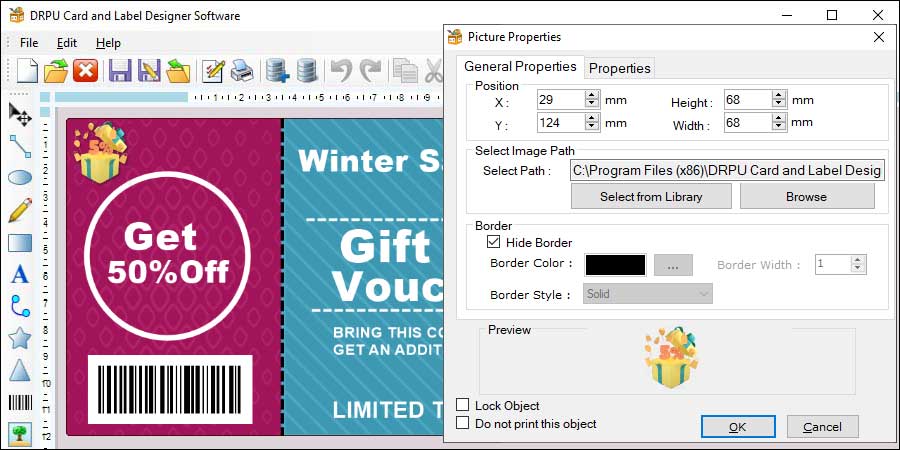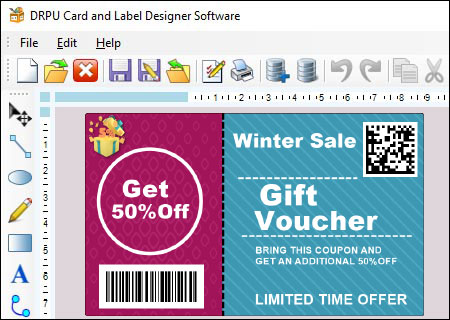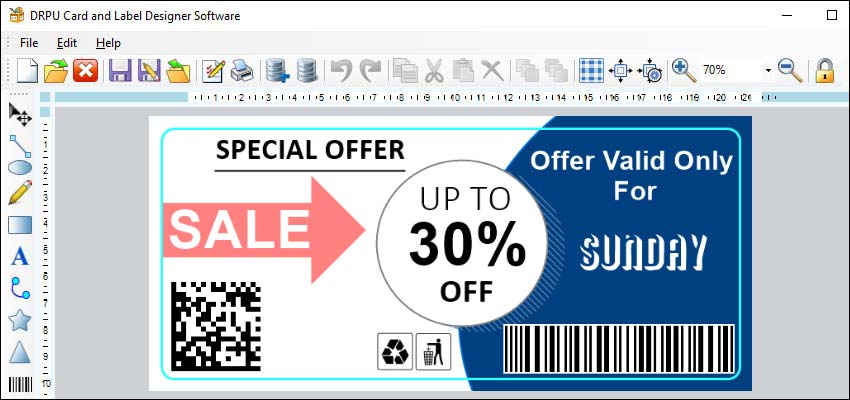Emerging Trends and Balance Elements in Label Design
| Last Updated On:
Designing labels for complex products such as cosmetics or food products with multiple ingredients and health claims requires a thoughtful and deliberate approach. There are several key considerations that must be taken into account to ensure that the label effectively communicates the necessary information while also complying with regulatory requirements.
❖ Emerging Trends And Technologies In Label Design
Label design is constantly evolving, and there are several emerging trends and technologies that are transforming the way products are labeled. Some of these trends include:
Consumers are becoming more aware of the impact of packaging on the environment, and as a result, sustainable labeling is becoming more popular. This can include the use of biodegradable or compostable materials, as well as labeling designs that minimize waste and promote recycling.
QR codes are becoming more popular in label design because they offer a convenient way for consumers to access product information. They can be scanned using a smartphone camera, which takes the user to a website, video, or other digital content that provides additional product information or other interactive experiences.
Augmented reality (AR) is another emerging technology that is being used in label design. AR labels can be scanned using a smartphone or tablet camera, which then overlays digital content on top of the physical label. This can include animations, 3D models, or other interactive elements that enhance the user's experience.
Smart labels contain sensors or other electronic components collect and transmit data about the product. Include information about temperature, humidity, or other factors that can affect the quality or safety of the product. Smart labels helps to improve supply chain visibility, reduce waste, and enhance the overall user experience.
In contrast to the trend towards more interactive and technology-driven labeling, minimalist labeling is also becoming more popular. This trend emphasizes clean, simple designs that focus on essential product information, such as ingredients , while minimizing extraneous details.
Overall, these emerging trends and technologies are transforming label design and helping to improve the user experience while also promoting sustainability and responsible packaging practices.
❖ Designing Eco-Friendly And Sustainable Label Designs
Designing eco-friendly and sustainable label designs involves considering the environmental impact of the label and the packaging as a whole. Here are some best practices for designing eco-friendly and sustainable label designs:
- 1 Use Recycled Materials: When designing labels, consider using recycled materials such as post-consumer waste paper or biodegradable materials like cornstarch or bamboo. This reduces the carbon footprint of the label and promotes a circular economy.
- 2Minimize the Use of Resources: Use minimal ink, adhesives, and substrate in label design. This reduces waste and cuts down on the environmental impact of the label.
- 3 Choose Sustainable Inks: Use environmentally friendly inks like soy-based inks or vegetable inks that are free of volatile organic compounds (VOCs). These inks produce less waste and are more eco-friendly than traditional inks.
- 4 Opt for Renewable Energy Sources: Consider sourcing your label production from a printer who uses renewable energy sources. This reduces your carbon footprint and promotes the use of clean energy.
- 5 Promote Recycling: Promote recycling by designing labels with clear recycling instructions and using recycled materials in the label design. This educates the consumer on proper disposal and helps to promote a circular economy.
- 6 Design for Durability: Make labels that are durable, so they last longer and do not need to be replaced as frequently. Durable labels can also withstand a range of environmental conditions.
- 7 Keep it Simple: Keep the design simple with minimal graphics and typography. This reduces the amount of ink and substrate needed, which in turn reduces the carbon footprint of the label.
Overall, eco-friendly and sustainable label design involves considering the environmental impact of the label design and reducing waste. By using recycled materials, sustainable inks, and promoting recycling, you can create eco-friendly and sustainable label designs.
❖ Balance design elements such as text, images in label designs
In this response, we will explore how to balance these elements effectively in label designs and why it is important.

| Text in Label Designs | Text is one of the most critical elements in label design. It communicates essential information about the product, such as its name, ingredients, directions for use, and other details. The text's placement, font, and size play a significant role in the design's readability, clarity, and impact. The text's placement is also crucial in label design. The most important information should be in a prominent location, such as the product name or logo. Information such as ingredients or directions for use should be easy to find and read, but they can be in a less prominent location. | When designing labels, it is essential to consider the product's target audience and the information they need. The font used should be legible and readable, even from a distance, to ensure that customers can easily read the label. The font's size should be appropriate for the label's size and the amount of text required. For example, if the label has a lot of text, the font size should be smaller, but it should still be legible. If the label has less text, the font size can be larger, making it more prominent. |
|---|---|---|
| Images in Label Designs | Images are another crucial element in label design. They can communicate a product's benefits, showcase its unique features, and create an emotional connection with the target audience. Images should be relevant to the product and its target audience, and they should be of high quality and resolution. | When designing labels, it is essential to consider the product's packaging and its shape and size. The image should be placed in a location that enhances the product's overall appearance and is visible even when the product is on a shelf or display. The image's size should also be appropriate for the label size and not overwhelm or obscure the text. |
| Whitespace in Label Designs | Whitespace is the space around design elements, such as text and images, and it plays a crucial role in label design. Whitespace can create balance and harmony in the design and draw the viewer's attention to specific elements, such as the product name or logo. It can also make the design appear less cluttered and more elegant. | When designing labels, it is essential to consider the amount of whitespace and how it affects the design's overall balance. Too much whitespace can make the design appear empty or uninteresting, while too little whitespace can make the design appear cluttered and confusing. The amount of whitespace should be appropriate for the label's size and the amount of text and images used. |
| Balancing Text, Images, and Whitespace in Label Designs | Balancing text, images, and whitespace is essential to create an effective and aesthetically pleasing label design. The first step is to determine the most critical information to communicate, such as the product name, logo, and other essential details. The next step is to choose images that enhance the product's appearance and communicate its benefits and features. | Once the text and images are selected, it is essential to consider the amount of whitespace and how it affects the overall design's balance. The amount of whitespace should be appropriate for the label's size and the amount of text and images used. Text should be placed in a location that is easy to read, and images should be placed in a location that enhances the product's appearance. |
It is also essential to consider the use of color and contrast in label design. Colors can create an emotional connection with the target audience and help differentiate the product from its competitors.
Download and Install DPRU Id Card Maker Software
❖ Creating A Consistent Brand Identity Through Label Design
Creating a consistent brand identity through label design is an important part of establishing and maintaining brand recognition. Here are some best practices for creating a consistent brand identity through label design:

-
💎 Keep it simple and memorable:
A simple design is often more memorable and effective than a complicated one. Keep your design minimalistic, and avoid cluttered or overly complex designs that may confuse the consumer.
-
💎
Use a consistent color scheme:
Using a consistent color scheme helps to establish brand recognition and create a cohesive visual identity. Choose a color scheme that reflects your brand values and personality, and use it consistently across all your packaging and branding materials.
-
💎 Incorporate your logo:
Your logo is an essential element of your brand identity. Make sure it's prominently featured on your label design, and ensure that it's consistent across all your branding materials.
-
💎 Use high-quality images:
High-quality images help to create a professional and polished look for your brand. Use high-resolution images that are relevant to your product and reflect your brand identity.
-
💎
Choose the right typography:
Typography is an essential element of label design. Choose a font that is easy to read and reflects your brand personality. Use consistent typography across all your branding materials to create a cohesive look.
-
💎 Consider your target audience:
Your label design should be tailored to your target audience. Consider the age, gender, interests, and preferences of your audience when designing your label.
-
💎 Be consistent:
Consistency is key to creating a strong brand identity. Use consistent design elements, color schemes, and typography across all your packaging and branding materials to create a cohesive and recognizable brand identity.
By following these best practices, you can create a label design that effectively communicates your brand identity, establishes brand recognition, and helps to build a loyal customer base.
❖ Approach Designing Labels For Complex Products
-
Understand the Product and Its
Target Audience
The first step in designing a label for a complex product is to understand the product and its target audience. This involves gathering information about the product, including its ingredients, health claims, and intended use. It is also important to understand the target audience for the product, including their needs, preferences, and purchasing habits. This information can be gathered through market research, focus groups, and consumer surveys.
For example, when designing a label for a cosmetic product, it is important to understand the product's ingredients, its intended use, and the target audience's preferences for scents and textures. When designing a label for a food product with health claims, it is important to understand the product's ingredients, the specific health claims being made, and the target audience's dietary preferences and restrictions.
-
Comply with Regulations
When designing labels for complex products, it is essential to comply with regulatory requirements. The regulatory landscape for labeling varies by product category and country, so it is important to research and understand the specific requirements for the product being labeled. This includes compliance with regulations for ingredient labeling, health claims, and any other applicable regulations.
For example, in the United States, the Food and Drug Administration (FDA) requires that cosmetic labels include a list of ingredients in descending order of predominance by weight. The FDA also regulates health claims made on food labels, requiring that they be truthful and not misleading. Compliance with these regulations ensures that the label is informative, accurate, and legally compliant.
❖ Create a Visually Appealing and Informative Design
Once the product and regulatory requirements have been understood, it is time to create a visually appealing and informative label design. This involves using design elements such as typography, color, and imagery to create a cohesive and informative design.
-
➲ Typography:
The typography used on the label should be legible, readable, and consistent. It is important to choose a font that is easy to read, even at small sizes. The typography should also be consistent throughout the label, with headings and subheadings clearly differentiated.
-
➲
Color:
The color palette used on the label should be consistent with the brand identity and target audience. It is important to choose colors that are both visually appealing and communicate the product's intended use or health claims.
-
➲
Imagery:
Imagery can be used to communicate the product's ingredients or intended use. It is important to use high-quality images that are relevant to the product and add value to the overall design.
-
➲ Information Hierarchy:
The label should be designed with an information hierarchy, with the most important information prominently displayed. This ensures that the consumer can easily find the information they are looking for, even if the label contains a large amount of information.
